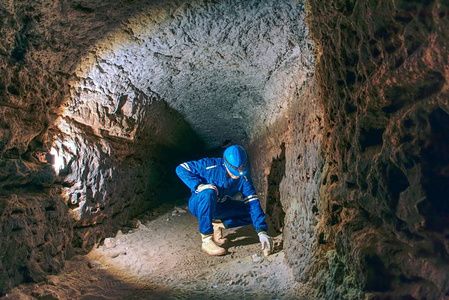Mining is a vital industry that helps to extract valuable resources from the depths of the earth. However, mining operations also face unique challenges, particularly with potentially dangerous gases that can accumulate in underground environments. To ensure that miners can work safely amidst these potential risks, gas detectors play an integral role in mine safety management. Industrial Fixed and portable gas detectors have become two of the most important tools for mine safety, playing unique and critical roles in continuous monitoring and mobile monitoring respectively.
Gas detectors are essential for monitoring hazardous gases such as Methane (CH4), Carbon Monoxide (CO), and Hydrogen Sulfide (H2S) in mines. They provide continuous or on-demand monitoring and trigger alarms when gas levels exceed safe limits. By detecting leaks or buildups early, gas detectors help prevent accidents, guide emergency responses, and protect workers’ safety in both open areas and confined spaces.

What Gases Need to Be Monitored in Mines?
| Gas Type | Potential Risk | Common Sources |
| Methane (CH4) | Highly flammable, explosive | Released from coal seams or rock strata |
| Carbon Monoxide (CO) | Toxic, deadly in high concentrations | Equipment exhaust, fires, poor ventilation |
| Oxygen (O2) | Low levels can cause suffocation | Confined spaces, Oxygen displacement |
| Carbon Dioxide (CO2) | Toxic at high levels, Oxygen displacement | Human respiration, oxidation processes |
| Hydrogen Sulfide (H2S) | Highly toxic, corrosive | From decomposition or certain ores |
| Nitrogen Oxides (NOX), Sulfur Dioxide (SO2) | Toxic, corrosive gases | Blasting, diesel equipment exhaust |
Which Gas Detectors Are Used in Mines?
Portable Gas Monitors
GasDog portable gas detectors are used for real-time monitoring of a specific hazardous gas. Designed for mobility and ease of use, they are ideal for on-site inspections, confined space entry, and personal safety in industrial or mining environments. These handheld monitors alert users instantly when gas levels exceed safe thresholds, enabling quick response and risk mitigation.
- Methane (CH4) Gas Detector: It detects the build-up of Methane and sounds an alarm if the Methane concentration exceeds safe limits. Methane gas detectors help maintain CH4 concentrations within safe limits and reduce the risk of explosion.
- Carbon Monoxide (CO) Gas Detector: In underground mine operations, using a handheld CO gas detector can monitor the concentration of Carbon Monoxide promptly and raise an alarm once the concentration exceeds the safe limit, safeguarding the safety of miners.
- Hydrogen Sulfide (H2S) Gas Detector: Hydrogen Sulfide is a toxic gas that can affect miners' health even at low concentrations. Hydrogen Sulfide gas monitors can detect H2S in advance to ensure the safety of miners.
- Oxygen (O2) Gas Detector: In the mines, too low a concentration of Oxygen may lead to asphyxiation, while too high a concentration of Oxygen may cause a fire or explosion. Oxygen gas detectors can provide timely alarms and remind miners to take necessary measures.
- Nitrogen Oxides (NOX) Gas Detector: NOx gas detectors continuously monitor harmful Nitrogen Oxides and alert miners when concentrations rise above permissible levels, helping to prevent long-term exposure and respiratory hazards.
- Sulfur Dioxide (SO2) Gas Detector: SO2 detectors provide real-time monitoring and alarm notifications when levels exceed safe thresholds, ensuring prompt action can be taken to protect miners' health.
Fixed Gas Monitors
In mining environments, fixed gas detectors can be permanently installed in high-risk areas such as mine shafts, tunnels, ventilation points, and equipment rooms to continuously monitor for the presence of a specific hazardous gas. By providing 24/7 real-time monitoring and automatic alarm alerts when gas levels exceed preset thresholds, these fixed detectors help prevent accidents related to gas leaks, explosions, or toxic exposure. Their integration with ventilation systems and alarm control panels allows for immediate corrective actions, making them essential components of a mine’s safety infrastructure.
